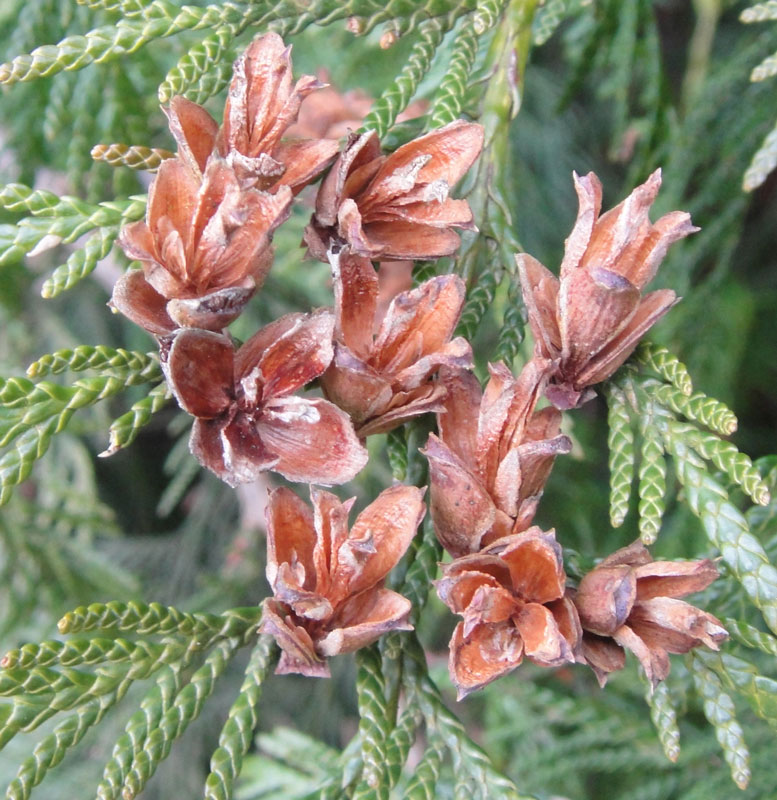Thuja
|
Family: Cupressaceae |
Trees evergreen, small to large. Branchlets flattened, in fan-shaped, flattened, frondlike sprays. Leaves opposite in 4 ranks. Adult leaves heteromorphic; those on larger branchlets with sharp, erect, free apices to ca. 2 mm; those on flattened lateral branchlets crowded, appressed, scalelike, lateral pairs keeled, facial pairs flat; abaxial glands present or absent. Pollen cones with 2--6 pairs of sporophylls, each sporophyll with 2--4 pollen sacs. Seed cones maturing and opening first year, ellipsoid, (6--)9--14(--18) mm; scales persistent, 4--6 pairs, overlapping, oblong and basifixed, thin and woody, 2--3 central pairs fertile, uniformly thin or with slightly enlarged apex, remaining scales sterile. Seeds 1--3 per scale, lenticular, equally 2-winged; cotyledons 2. x = 11. Two Asiatic species, Thuja koraiensis Nakai (Korean arborvitae) and T . standishii (Gordon) Carrière (Japanese arborvitae), are occasional in cultivation. They differ from the native species in having more closely spaced long-shoot leaves with shorter, spreading points.
Female cones oblong-ovoid, leathery or woody, with 4-6 pairs of overlapping scales, the upper and lower scales sterile, the middle ones each with 2-3 ovules; seeds winged; microsporophylls few; monoecious trees with shreddy bark and small, appressed, imbricate, scale-like, decussately opposite lvs, the lateral ones folded, the upper and lower flat and with a prominent resin-gland, branchlets numerous from the axils of the lateral lvs, forming soft, flat sprays. 6, N. Temp. Gleason, Henry A. & Cronquist, Arthur J. 1991. Manual of vascular plants of northeastern United States and adjacent Canada. lxxv + 910 pp. ©The New York Botanical Garden. All rights reserved. Used by permission. |

